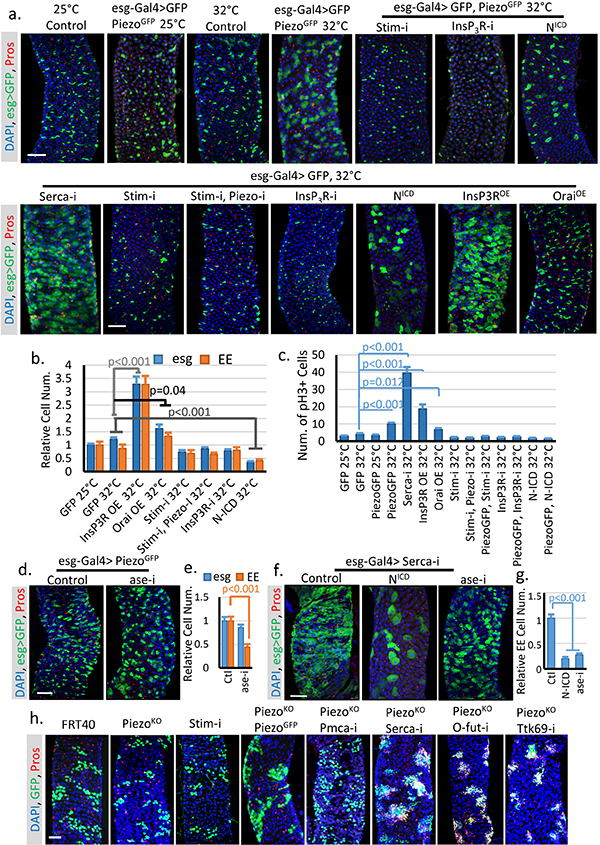Extended Data Figure 4. Piezo regulate stem cell differentiation primarily through Ca2+ signaling, which is upstream of Notch, Ttk69, and the Achaete-Scute complex (AS-C).

a. Phenotypes associated with UAS-GFP (at 25°C or 32°C), UAS-PiezoGFP together with StimRNAi, InsP3RRNAi and NICD, and UAS-GFP together with StimRNAi, StimRNAi + PiezoRNAi, InsP3RRNAi, NICD, InsP3R over-expression (InsP3ROE), and Orai over-expression (OraiOE) (at 32°C). Overexpression of PiezoGFP using esg-Gal4 did not show a significant phenotype at 25°C. By contrast, incubation at 32°C for 4 days showed an increased in the number of both esg+ cells and Pros+ EEs. Moderate over-expression of Piezo at 25°C had no significant effects. However, strong over-expression at 32°C caused an increase in both esg+ cells and EEs, which phenocopied the increase of cytosolic Ca2+ through SERCA reduction. All flies were incubated at the indicated temperature for 4–5 days before analysis. b. Statistics of the number of esg+ and Pros+ cells within 10,000 μm2 area. Number of midgut areas quantified: n=30 (GFP 25°C), n=31 (GFP 32°C), n=25 (InsP3ROE 32°C), n=27 (OraiOE 32°C), n=31 (Stim-i 32°C), n=27 (Stim-i, Piezo-i 32°C), n=29 (InsP3R-i 32°C), n=29 (N-ICD 32°C). c. Average number of mitotic cells within the fly midgut from indicated genotypes were quantified. Number of midguts analyzed: n=20 (GFP 25°C), n=19 (GFP 32°C), n=20 (PiezoGFP 25°C), n=19 (PiezoGFP 32°C), n=18 (Serca-I, 32°C), n=18 (InsP3ROE 32°C), n=24 (OraiOE 32°C), n=19 (Stim-i 32°C), n=19 (Stim-i, Piezo-i 32°C), n=19 (PiezoGFP, Stim-i 32°C), n=18 (InsP3R-i 32°C), n=18 (PiezoGFP, InsP3R-i 32°C), n=17 (N-ICD 32°C), n=17 (PiezoGFP, N-ICD 32°C). d,e. EE production induced by overexpression of PiezoGFP is blocked by aseRNAi (Acheate-Scute complex component asense). Number of midgut areas quantified: n=29 (Ctl), n=30 (ase-i). f,g. Expression of NICD in the presence of SercaRNAi significantly reduced both stem cell proliferation and EE production. Meanwhile, knocking-down ase specifically blocks EE differentiation but not proliferation. Number of midgut areas quantified: n=27 (Ctl), n=24 (NICD), n=25 (ase-i). Even though ttk69 and AS-C knock down affect Piezo and Serca related phenotypes, we think that Ca2+ signaling probably does not directly affects Ttk69 or AS-C since previous studies have shown that Ttk69 and AS-C reduction can convert Notch-high EB cell into EEs28, but neither Piezo over-expression nor Serca knockdown has any effect in EBs. h. MARCM clones of cells homozygous for FRT (Ctl), Piezo null allele (PiezoKO), Stim-RNAi, PiezoKO + PiezoGFP, PiezoKO + Pmca-RNAi, PiezoKO + Serca-RNAi, PiezoKO + O-fut-RNAi, and PiezoKO + ttk69-RNAi. Rescue/reversion of the reduction of EEs in Piezo null clones by increasing cytosolic Ca2+ (by knocking down the Ca2+ export pump Pmca or endoplasmic reticulum Ca2+ ATPase Serca) or by reducing Notch activity (by knocking down its key processing enzyme O-fut, and knocking down EE cell fate repressor ttk69). All data are collected from at least two independent replicates and are expressed as mean + s.e.m.. P-values are calculated from two-tailed Student t-test with unequal variance. Scale bar, 50 μm.
